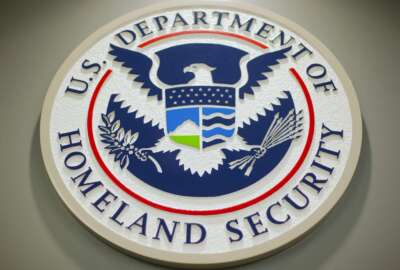Dump DUNS? Maybe it’s starting
The Federal Procurement Data System-Next Generation will change the way it provides public feeds of procurement data on Nov. 21. The General Services...
CORRECTION: An earlier version of the story contained an inaccurate description about the change to the public feed from the Federal Procurement Data System-Next Generation. Federal News Radio regrets the error. This story has been updated.
The Federal Procurement Data System-Next Generation will change the way it provides public feeds of procurement data on Nov. 21.
The General Services Administration, which runs FPDS-NG, said the public ATOM feeds will be updated by masking select data elements, specifically company’s DUNS number.
Why is this important?
Experts say the impact likely will be felt most by government contractors and good government groups.
A GSA official said the ATOM feed no longer will include the DUNS numbers for the intermediary companies, only the parent company, called the Global Ultimate DUNS Number, and the part of the company subsidiary that won the award from the government.
The change to the ATOM Feed only applies to the need to mask four data elements representing the headquarters/parent DUNS numbers and domestic ultimate DUNS numbers and the corresponding names for each.
The official said the change is necessary because under the contract with Dun and Bradstreet the government doesn’t have access to the other data to make it public.
Guy Timberlake, chief visionary officer and CEO of the American Small Business Coalition, wrote in a recent blog post that the change in the ATOM feed would be significant because of all the different numerical codes the government requires, making it more difficult to understand the data.
He said vendors need to register in the System for Award Management (SAM) to get a CAGE Code in order to do business with the government. To get a CAGE Code, a company needs a number from Dun and Bradstreet. The DUNS number and CAGE code are different, and they two are bound only by the company’s Tax ID number (TIN).
The CAGE code could be the next step in mapping the hierarchy internally of contract awards. It’s unclear whether the government will use CAGE Codes to replace D&B numbers, but some experts say it’s certainly a first step to expand the potential tracking of awards at a higher level and one that’s not tied to one, proprietary approach.
The change to FPDS-NG isn’t new, Timberlake said vendors have had more than a year to prepare.
At least for one market research firm, Deltek, the change isn’t a big deal.
Kevin Plexico, Deltek’s vice president of information solutions, said his company’s approach to tracking and mapping contracting opportunities will not be affected.
“I do think as the government makes this data less useful, they will need to take on a greater role of managing company hierarchies, such as through CAGE codes to accomplish what they are currently leveraging D&B to accomplish,” Plexico said by email. “I think it will impact any organization trying to make use of the data for competitor intelligence.
“It will make it much more time consuming to rationalize. For commercial providers, they are going to have to have other techniques to rationalize their data, but it will help justify the need for companies to leverage commercial providers who’ve done the heavy lifting for them. It is not a major problem but it is frustrating for transparency unless the government comes up with another method of their own for managing company associations.”
It seems GSA gave companies plenty of warning and time to prepare for the change — which is the good news. But it also signifies increasing concerns about using DUNS’ proprietary numbering system, which are mostly raised by good government groups in relation to the DATA Act.
Copyright © 2025 Federal News Network. All rights reserved. This website is not intended for users located within the European Economic Area.
Jason Miller is executive editor of Federal News Network and directs news coverage on the people, policy and programs of the federal government.
Follow @jmillerWFED






